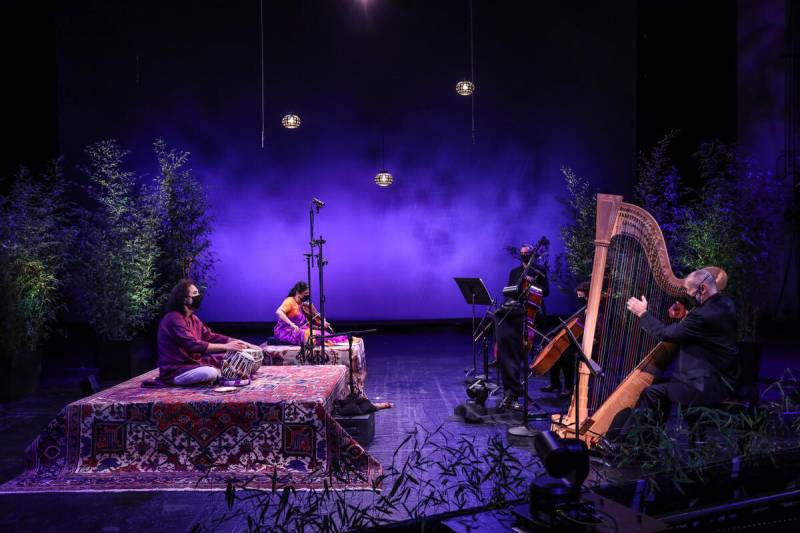Shortly after Esa-Pekka Salonen stepped into his role as San Francisco Symphony music director, the pandemic upended months of scheduled concerts meant to expand the orchestra’s cultural horizons. Salonen and the musicians quickly pivoted, and the symphony moved online with projects like its genre-defying podcast and mini-doc series, CURRENTS. (“No matter how we spin it, we are not an orchestra,” Salonen told The New York Times. “We are a media house.”)
In that spirit of making music accessible, the San Francisco Symphony announced today its new on-demand streaming platform, SFSymphony+. The service is subscription-based, although it offers some free content, and will feature new CURRENTS episodes that explore Indian classical, Native American, Zimbabwean, Persian and klezmer musical cultures.
SFSymphony+ also includes a slate of new SoundBox programs. SoundBox is the SF Symphony’s more intimate, less formal concert series, where contemporary composers present programs that incorporate multimedia and experimental collaborations. SFSymphony+ will have new, virtual SoundBox concerts once a month. The first program, on Feb. 4, will be curated by Salonen. Titled Nostalgia, the concert features three pieces created in the last 10 years: Freya Waley-Cohen’s Conjure, Missy Mazzoli’s Vespers for Violin and Caroline Shaw’s Entr’acte.


